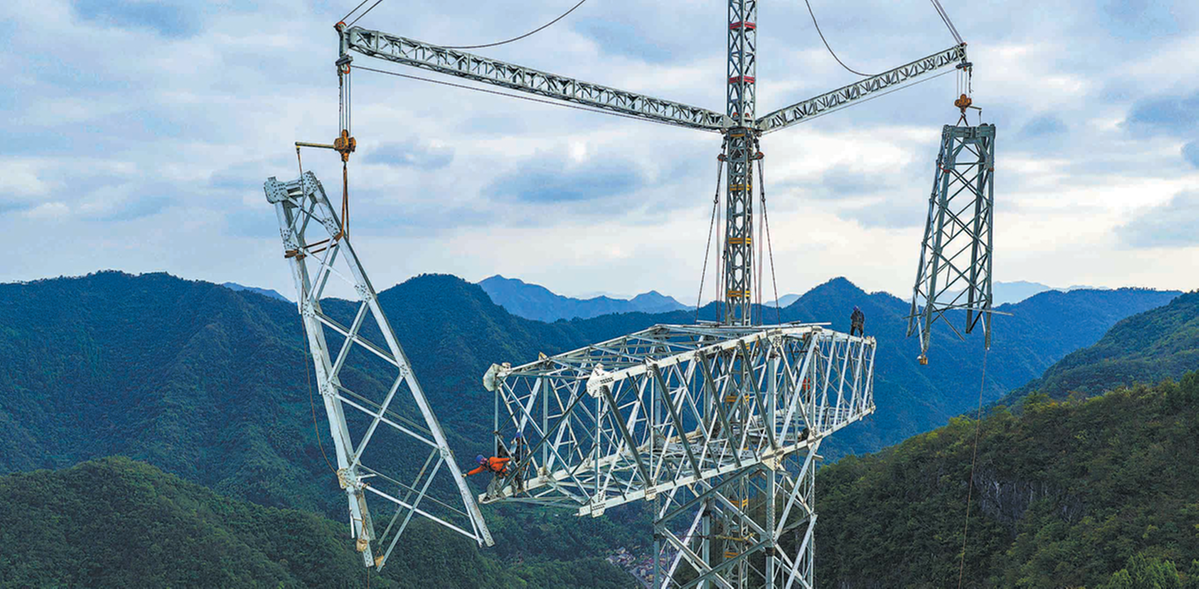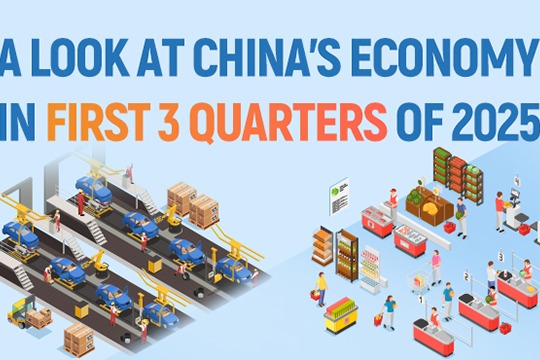Surge in China's electricity market-based trading volumes
Transactions increased from 1.1 trillion kilowatt-hours in 2016 to 6.2 trillion kWh in 2024


China's electricity market has undergone a dramatic transformation over the past decade, with market-based trading volumes surging and new participants emerging, underpinned by the country's rapid expansion of renewable energy, said officials and industry experts.
Marketized electricity transactions in China drastically increased from 1.1 trillion kilowatt-hours in 2016 to 6.2 trillion kWh in 2024, representing a jump from 17 percent to 63 percent of total societal electricity consumption, said Huang Xuenong, executive director-general for regulation of the National Energy Administration.
"After 10 years of exploration and practice, construction of China's electricity market has achieved remarkable results," Huang said during the International Forum on Energy Transition held recently in Suzhou, Jiangsu province.
Figures released by the administration reveal that electricity market transactions in the first eight months of 2025 reached 4.3 trillion kWh, a 7 percent year-on-year increase, accounting for 63.2 percent of the country's total power consumption.
The number of registered market entities had soared to over 800,000, a 20-fold increase since 2016. Coal-fired power units and industrial and commercial users had fully entered the market, with new energy sources also set to participate fully, it said.
Huang said the burgeoning market has also seen the proliferation of over 4,000 power sales companies, with nearly 600,000 retail users now purchasing electricity through the retail market.
Novel business models, including independent energy storage, virtual power plants and load aggregators, are thriving, fostering dynamic interactions among diverse participants, which are crucial as China's grid grapples with the demands of rapidly integrating intermittent renewables, he said.
"With the rapid development of new energy, the demand for power system regulation capabilities is strong, and new business forms and models continue to emerge to ensure the safe and stable operation of the power system."
Yang Kun, executive vice-chairman of the China Electricity Council, added that by the end of June, the number of market operating entities nationwide reached 973,000, up 23.8 percent year-on-year.
He emphasized that emerging entities like new energy storage, virtual power plants and load aggregators have achieved "large-scale, market-oriented breakthroughs", injecting new vitality into the power market.
China has set ambitious targets, aiming for nonfossil energy to account for over 30 percent of total energy consumption by 2035. The combined installed capacity of wind and solar power is projected to exceed six times its 2020 level, striving to reach 3.6 billion kilowatts.
"Over the past decade, China's power system reform has continued to deepen, the electricity market system has gradually improved, and resource allocation capabilities have been increasingly optimized, providing strong support for accelerating the construction of a new power system," said Yang.
Interprovincial and interregional transactions reached 1.03 trillion kWh in the first eight months of 2025, an increase of 9.4 percent year-on-year, demonstrating normalized cross-regional trading.
The long-term market continues to serve as a "ballast stone" for power supply, while interprovincial spot markets and seven provincial spot electricity markets have officially commenced operations. The expanding and diversifying auxiliary services market provides critical support for high-penetration renewable energy integration, he said.
With a shift that implies a greater reliance on market demand and pricing mechanisms, a sustained period of growth in energy storage capacity is expected, further incentivizing entities to invest in more sectors such as energy storage equipment to mitigate risk and ensure grid stability.
According to the NEA, investment in energy storage has seen rapid growth in recent years, spurred by the expansion of renewable energy technologies.
Zhu Gongshan, chairman of GCL Group, China's largest private power producer, highlighted the critical importance of energy storage, alongside auxiliary services like vehicle-to-grid systems and smart microgrids, for ensuring grid stability.
These technologies are essential for rapidly adjusting power output to meet fluctuating demand and providing reliable backup, thereby fostering a more resilient and responsive energy infrastructure, Zhu said.
Shu Yinbiao, an academician at the Chinese Academy of Engineering, emphasized the profound significance of transforming the power sector, identifying it as a crucial element in China's national endeavor to achieve carbon neutrality before 2060.
"China's power sector has undergone extensive reforms over the past two decades, culminating in a formidable infrastructure that now commands the world's largest installed capacity," he said.
"This substantial growth and modernization reflect the nation's significant investment and strategic development in its energy capabilities, establishing it as a global leader in power generation."
However, despite this remarkable progress, Shu cautioned that the sector faces ongoing challenges, particularly in maintaining and enhancing the reliability of such a vast and complex system, as the share of variable renewable energy continues to grow.
These complexities are further compounded by the escalating integration of variable renewable energy sources, which necessitates sophisticated solutions to ensure grid stability and consistent power delivery, he said.
To address these future hurdles, Shu advocated for a concentrated drive toward independent innovation within the power system. He stressed the imperative to achieve breakthroughs in core technologies, which are essential for guaranteeing the healthy and stable operation of new-generation power systems.
Additionally, he underscored the need for intensified technological advancements to facilitate the widespread and large-scale deployment of clean energy solutions across China.
To further boost the nation's capacity to efficiently optimize and distribute renewable energy resources across vast geographical areas, China has been actively enhancing its power grid infrastructure through continuous advancements in grid connections and transmission projects.
The country's extensive ultra-high voltage grid, featuring lines operating above 800 kV DC or 1,000 kV AC, has profoundly reshaped its energy landscape, said Ye Xiaoning, a senior engineer at the new energy department of the State Grid Energy Research Institute.
This powerful network facilitates the rapid integration of renewable power sources. By the end of last year, China had established 42 UHV transmission lines, creating a robust and resilient energy backbone, according to the institute.
Grid operators, including State Grid Corp of China, are consistently bolstering new energy transmission initiatives, driving both intra- and inter-provincial projects.
State Grid, the largest operator, is escalating its investment in UHV projects to enable efficient, long-distance power transfer. It plans a record investment exceeding 650 billion yuan ($91.35 billion) in the grid this year, demonstrating a strong commitment to an integrated and powerful energy future.




































